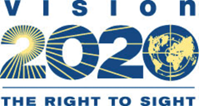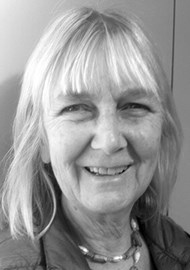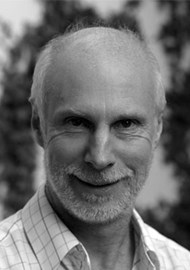More than 70 representatives from 10 Commonwealth countries (in the African, Caribbean and Pacific regions) and Indonesia gathered at a five-day workshop in November 2014 to establish district or national plans to reduce blindness from diabetic retinopathy (DR).
The event was hosted by the DR-NET.Comm (Diabetic Retinopathy Commonwealth Network), a five-year initiative run by the VISION 2020 LINKS Programme to address the growing burden of diabetic eye disease across the Commonwealth [1]. It provides guidance to, and shares learning within, a network of training LINKS between African and Caribbean countries and their respective UK partners. It was set up to address what was raised as a high priority area by a number of VISION 2020 LINKS. It is a huge area of unmet need in low and middle-income countries. Development of a network for shared learning was identified as the way forward.
DR-NET.Comm is part of the Commonwealth Eye Health Consortium (CEHC) and VISION 2020 LINKS Programme and is funded by The Queen Elizabeth Diamond Jubilee Trust.


Statistics at a glance:
-
19.8 million Africans suffer from diabetes
-
A 109% increase in diabetes is predicted in the African Region over the next 20 years, the largest increase in the world
-
A third of people with diabetes have diabetic retinopathy
-
A tenth of people with diabetes require treatment for visually-threatening diabetic retinopathy.
To work towards their goal, DR-NET.Comm held a workshop to bring together professionals involved in DR prevention and treatment in the 10 Commonwealth countries, with their UK LINK partners and other experts, to develop local or national plans to tackle the growing burden of DR. The week also aimed to provide best-practice evidence on DR detection and treatment and to establish a platform for ongoing shared learning.
The workshop commenced with a full day of lectures to update representatives from each of the three disciplines involved in DR programme planning and implementation (diabetes, ophthalmology and public health) with current knowledge and best practices in DR detection and treatment.

Presentations were given by 12 eminent speakers from the UK and other Commonwealth countries, including a comprehensive and informative update on the global burden of diabetes from David Cavan, Director of the International Diabetes Federation and a presentation from Peter Scanlon, Clinical Director of the NHS Diabetic Retinopathy Screening Programme for England.
The following day allowed theory to be contextualised through visits for all participants to five teaching hospitals in the London area.
On Wednesday 5 November delegates attended the official launch of the Commonwealth Eye Health Consortium at the London School of Hygiene & Tropical Medicine (LSHTM). Educational opportunities and new technologies supported by the CEHC were showcased, including a much-anticipated presentation on the innovative retinal photography mobile application (PEEK), from its creator Andrew Bastawrous, Research Fellow in International Eye Health at LSHTM.

Attendees at the launch of the Commonwealth Eye Health Consortium
at the London School of Hygiene & Tropical Medicine.
The final two days challenged delegates to apply the learning to their respective settings and develop a two-year DR detection and treatment plan for their district or nation. Each project defined its catchment area, calculated the size of its diabetic population and number of patients requiring treatment for visually-threatening diabetic retinopathy. Strengths and weaknesses of the current situations were outlined and activities for the next two years were defined. The planning process was guided by Professor Allen Foster, Co-Director, International Centre for Eye Health, who simplified the complex task by encouraging participants to return to the three key questions of planning: ‘Where are we now? Where do we want to be? How do we get there?’


Finally, each country team presented their situation analysis and action plan to the audience of Commonwealth peers and international eye health experts. Zambia’s presentation was commended as being a model programme in a low resource setting and awarded first place by the adjudicator Dr Matthew Burton, CEHC programme lead.
Advocacy with the Ministry of Health and non-governmental bodies was identified as a priority on each of the two-year action plans as financial and political support will be required for their successful implementation. Ideas, enthusiasm and partnerships were generated in time for delegates to return to their countries and engage with stakeholders on World Diabetes Day on Friday 14 November 2014.
Anticipated five-year impact of the DR-NET.Comm
Cumulatively, the DR-NET.Comm serves a population of 3.8 million people with diabetes, of whom an estimated 382,000 require treatment for visually-threatening diabetic retinopathy. At present, less than 10,000 individuals are receiving treatment each year in the catchment areas. During the week a commitment was made by the 15 LINKS teams to increase their treatment outputs by at least one patient per week. Over the course of the five-year project the 15 teams will treat at least 3,750 more patients. Assuming an average of ten years life-expectancy at the time of treatment, the DR-NET.Comm will prevent 37,500 years of blindness.
Sustaining the impact of DR-NET.Comm
The legacy of DR-NET.Comm is certain to last beyond the five-year project timescale. DR-NET.Comm promotes the integration of services into the health system; there is strong focus on training of health workers and emphasis is placed on forming long-term working relationships.
- Health system approach to planning
Delegates were guided through a World Health Organization (WHO) health-system framework approach to planning. This approach to planning is new to the field of ophthalmology, where project-centred and disease-specific programmes have previously predominated (e.g. cataract and trachoma control programmes). Chronic eye diseases, such as DR and glaucoma, demand a holistic approach to planning to ensure services are embedded in the existing health system, are patient-centred and have governmental support [2]. - Team approach to planning
The DR-NET.Comm funded attendance at the workshop by an ophthalmologist, diabetologist / endocrinologist, Ministry of Health (MoH) representative and an ophthalmic nurse or DR screener from each country team. This promoted joint ownership of the project by key healthcare workers and the MoH, encouraging implementation and government recognition. The concept of a multidisciplinary management team is strongly endorsed in the WHO managerial guidelines for other diseases, e.g. establishing cervical cancer screening programmes in resource-poor settings [3]. - Developing existing relationships between VISION 2020 LINK partners
The DR-NET.Comm is built on 12 established VISION 2020 LINKS between African and UK ophthalmology units, a new LINK between Jamaica and a UK unit, and a team from RANZCO (The Royal Australian and New Zealand College of Ophthalmologists) working in Fiji and the Pacific Islands. The DR-NET.Comm is supporting a series of bilateral exchange visits between UK and Commonwealth partner countries over the next five years to allow regular review and training updates. The VISION 2020 LINKS plan to continue the DR support beyond the five years, subject to continued funding available. - Establishing a Community of Practice between Commonwealth partners
An important aspect of the DR-NET.Comm is the formation of a network between the Commonwealth partners for sharing experiences, supporting neighbouring countries and publicising funding and academic meetings. A virtual networking platform will be supported by volunteers. This concept was enthusiastically welcomed by delegates at the workshop. Michael Gichangi, Chief Ophthalmologist, Ministry of Health, Kenya commented: “Now, we’ll use the network to find how different partners are doing and what it is that is getting results. From time to time it will be good to share what I find works, and I hope others will also share.” A DR-NET.Comm review workshop is anticipated at the end of year two (2016), to evaluate progress and plan for the next phase of DR services development. The Community of Practice will also facilitate ongoing data collection to monitor progress and assess eventual impact. - Training and research opportunities
DR-NET.Comm is one of many activities supported by the CEHC. The CEHC will deliver a five-year programme of research and clinical fellowships and scholarships to Masters programmes in Public Health for Eye Care, from which DR programmes can benefit. DR screening and treatment databases are also supported by the CEHC, providing a valuable dataset for shared learning and research.
Attendees at the launch of the Commonwealth Eye Health Consortium
at the London School of Hygiene & Tropical Medicine.
Quotes from participants
“It was an excellent workshop. I wish the momentum can go higher and higher in order to fight this deadly disease.”
Botswana
“An excellent example of collaboration in different specialties all with the same goal.”
Tanzania
“It was extremely important to share information amongst countries.”
Zambia
“I will plan and implement screening for DR, with adequate database and record keeping.”
Nigeria
Conclusion
The DR workshop was a resounding success: 15 district or national plans were created, a Community of Practice was formed, and solutions are being developed to protect the sight of the 3.8 million people with diabetes living in the catchment of the 15 DR-NET.Comm partners. Over the course of the five-year project, DR-NET.Comm aims to prevent a minimum of 37,500 years of blindness. Sustainability has been carefully considered and the impact of the initiative is expected to extend far beyond the project’s timeframe. Closing remarks at the workshop from Marcia Zondervan, Manager of DR-NET.Comm and the VISION 2020 LINKS Programme, reframed the task into a positive process of shared learning and steady progress using an analogy familiar to much of the audience: “Like the African proverb goes, ‘How do you eat an elephant? One bite at a time and with friends’, similarly with the DR-NET.Comm: diabetes is a huge, growing problem and difficult to tackle, but together, we can share best practices and ways forward, through the friendships that this LINKS network will create and sustain.”
References
1. Zondervan M, Walker C, Astbury N, Foster A. VISION 2020 LINKS Programme: reviewing the first ten years and announcing the new diabetic retinopathy initiative. Eye News 2014;20(6):32-6.
2. Blanchet K, Patel D. Applying principles of health system strengthening to eye care. Indian J Ophthalmol 2012;60:470-4.
3. World Health Organization, International Network for Cancer Treatment and Research: Planning and Implementing Cervical Cancer Prevention and Control Programs. 2004.
COMMENTS ARE WELCOME













